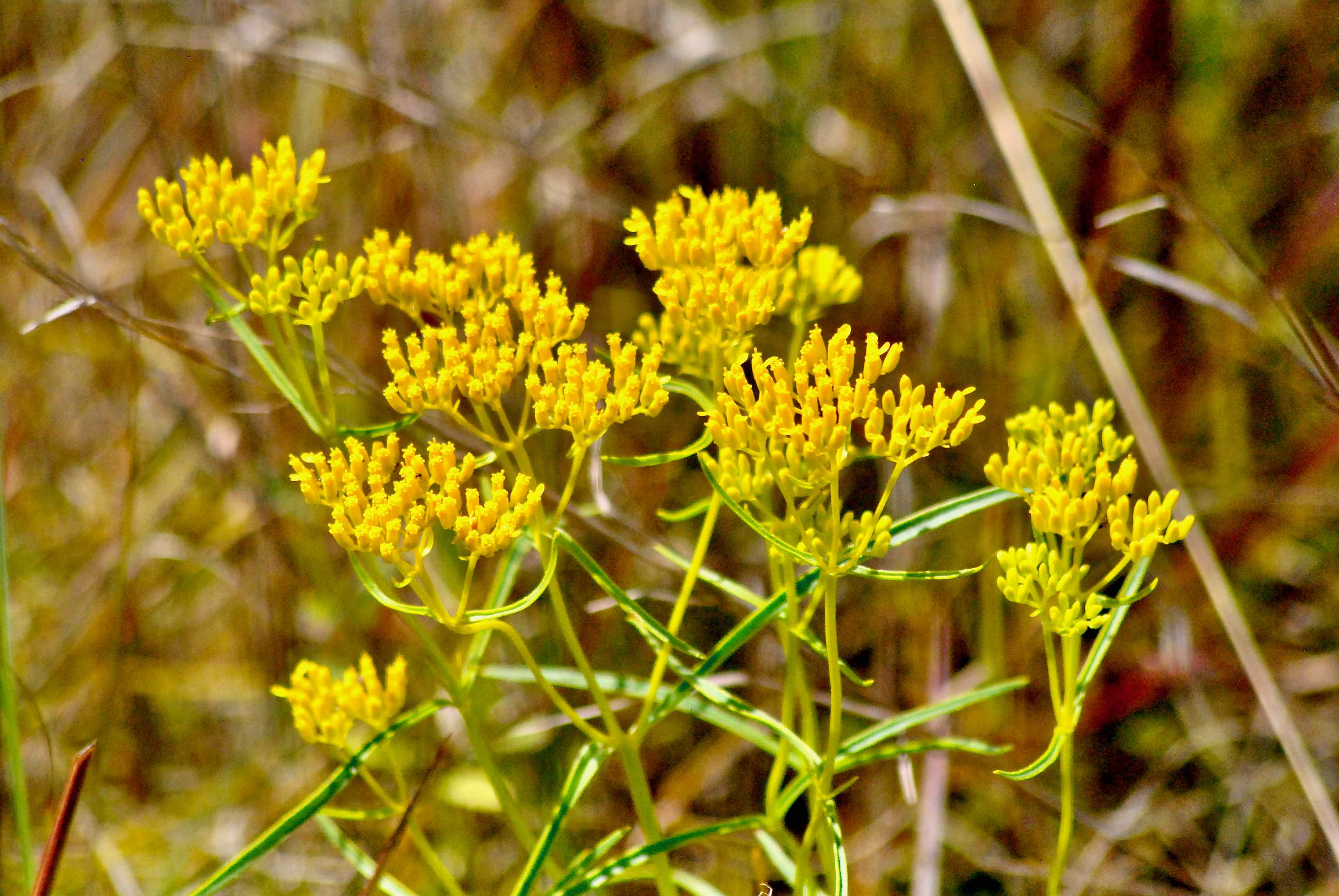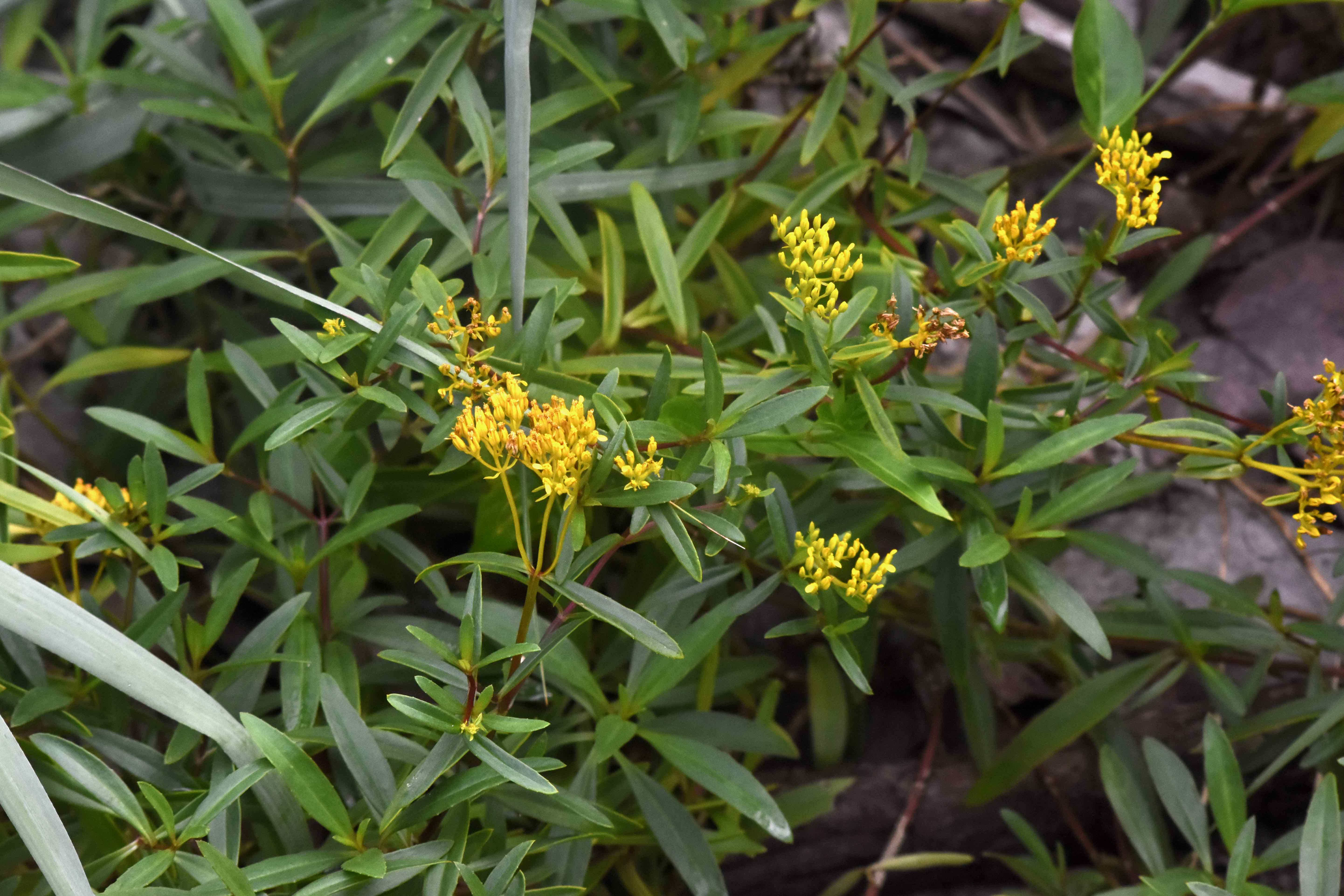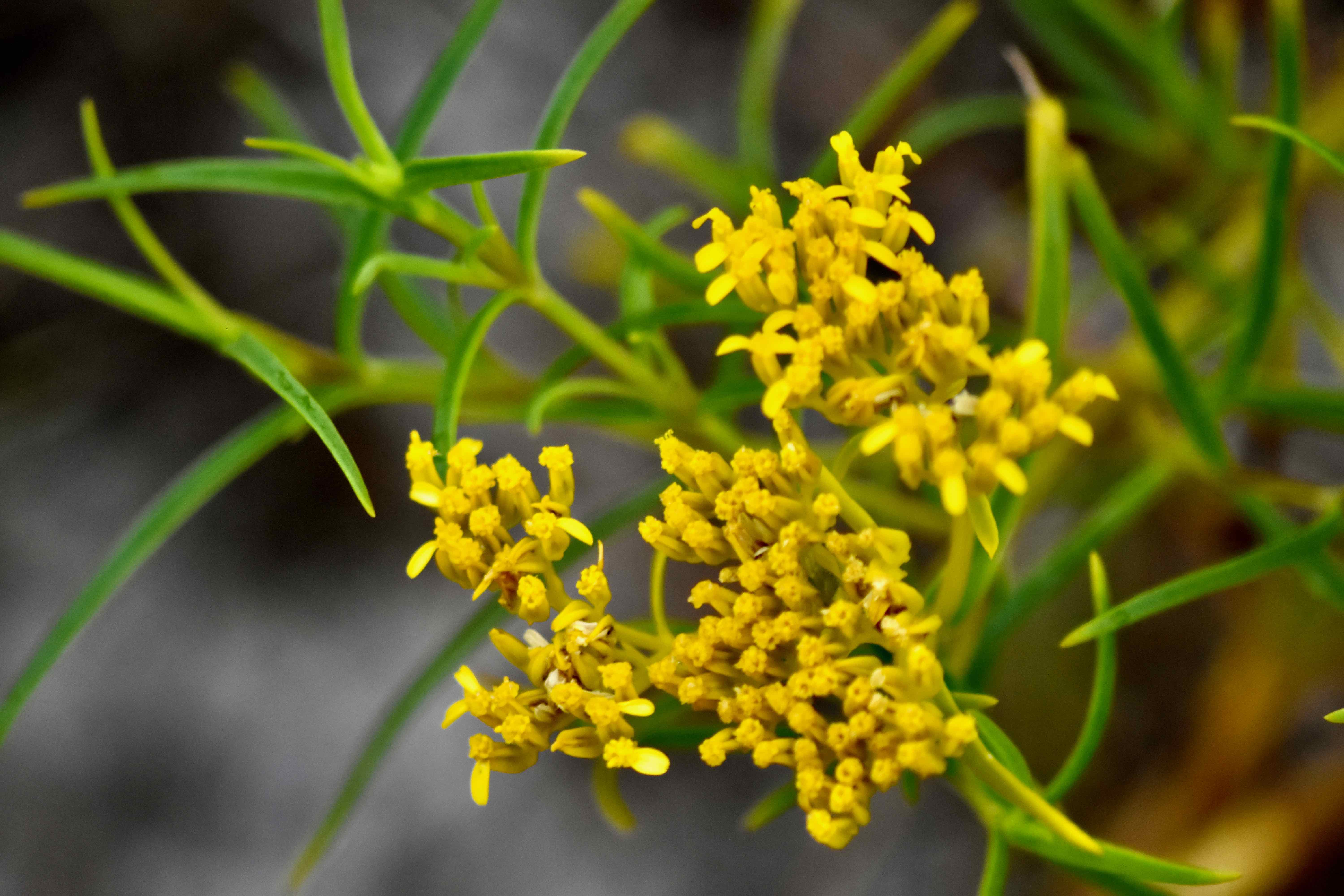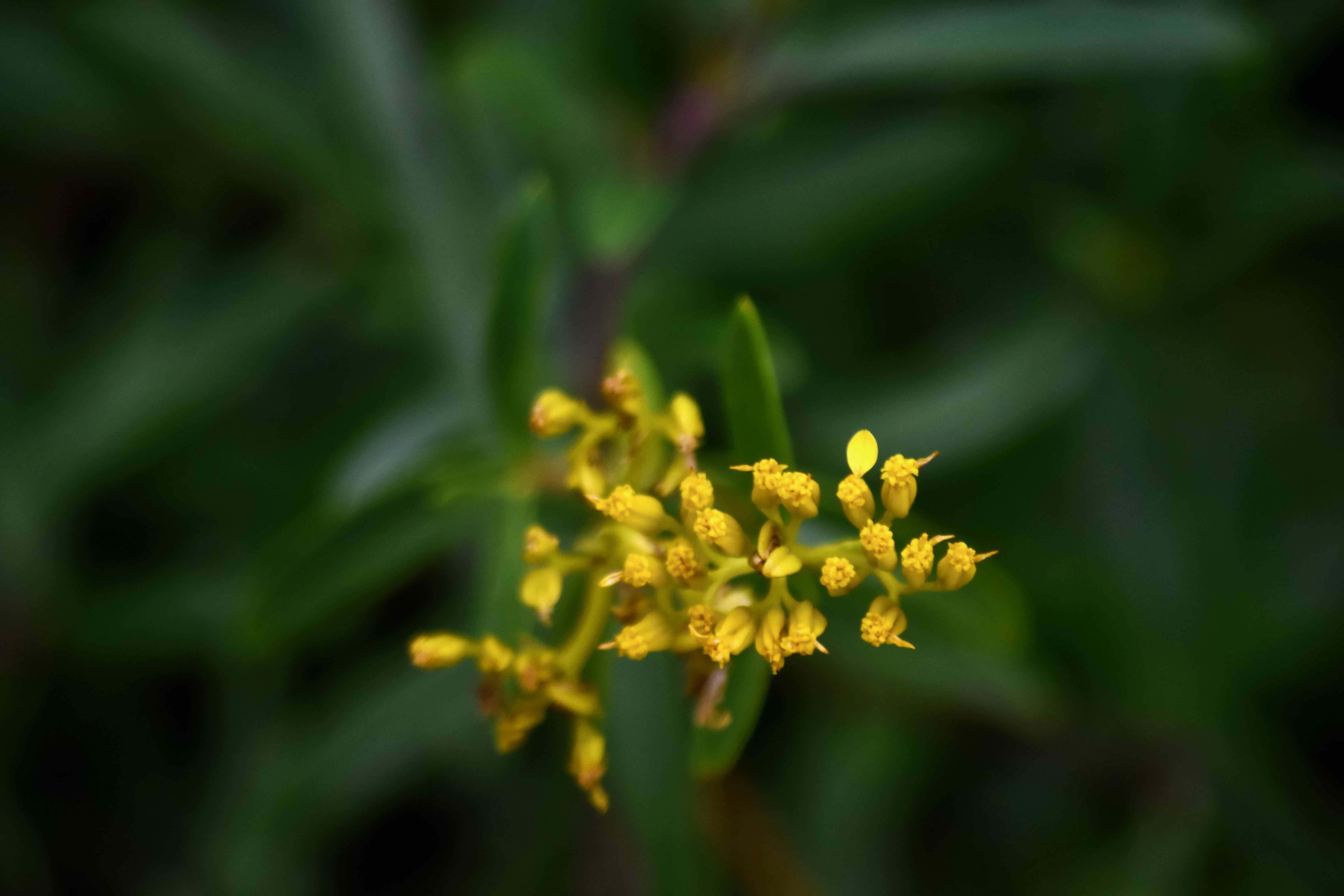
Narrowleaf Yellowtops, photographed at Everglades National Park, Homestead, Miami-Dade County, in April 2015.
Some common names of plants are head scratchers. Narrowleaf yellowtops, by contrast, is spot on. Even its scientific name, Flaveria linearis, is perfectly descriptive.
Narrowleaf yellowtops is a fairly common plant found throughout South Florida and as far north as Flagler County on the Atlantic Coast and Wakulla County in the Big Bend area of the Panhandle. It is a Florida native, in fact found only in Florida among the 50 states. It's also native to a few islands in the Caribbean, including Cuba and the Bahamas, Mexico's Yucatan Peninsula and Belize.
It is a perennial shrub that can reach one or two feet tall, some references say three feet, and forms mounds that are wider than the plant is tall. It has long, narrow leaves that are arranged opposite each other along the stem. The leaves are either smooth along the outer edge, or margin, or slightly serrated.
The plant is topped by corymbs, or clusters, of small, bright yellow flowers that bloom year round but peak in late summer and fall. As we said narrowleaf yellowtop perfectly describes the plant. Take apart the scientific name: Flaveria refers to the yellow flowers; linearia describes the long, narrow shape of the leaves. The flowers are an important source of nectar for bees, wasps, ants and butterflies. More on the butterflies in a bit.
Narrowleaf yellowtops is found in mostly coastal counties but it can find a home in a wide range of habitats, including pinelands, wet prairies and coastal uplands, where we found these plants growing. We've seen it just above the beach dunes in Blowing Rocks Preserve and also seen it in the pinelands of Everglades National Park.
It's not a finicky plant; it grows in nutrient-poor soil and it is drought tolerant. It can withstand salt spray, but when it grows in coastal areas it's usually found above the dunes and in places that are protected. It also tolerates salt water to an extent.
Narrowleaf yellowtops is used in landscaping because of its beautiful blooms and the butterflies they attract. There are a couple of caveats, however. It can spread so it might not be appropriate for small spaces, and it tends to get a little raggedy after the peak of flowering season, so it will require trimming to keep it looking good. On the plus side, it is a tough, durable plant that doesn't require watering once it is established. It can be grown from seed or division, and it's also available from a number of nurseries that specialize in native Florida plants.
As we said near the top the list of butterflies who nectar on the flowers of narrowleaf yellowtops is extraordinarily long. Among them: the cassius blue, Dorantes longtail skipper, Julia heliconian, Zarruco duckywing and the great southern white. It is not used as a host plant, however.
Narrowleaf yellowtops has a cousin, Florida yellowtops, Flaveria floridana, that is similar looking, but is found in the central part of the state and along the west coast. Narrowleaf yellowtops is a member of Asteraceae, the sunflower family.
Click on photo for larger image
Links for Narrowleaf Yellowtops



